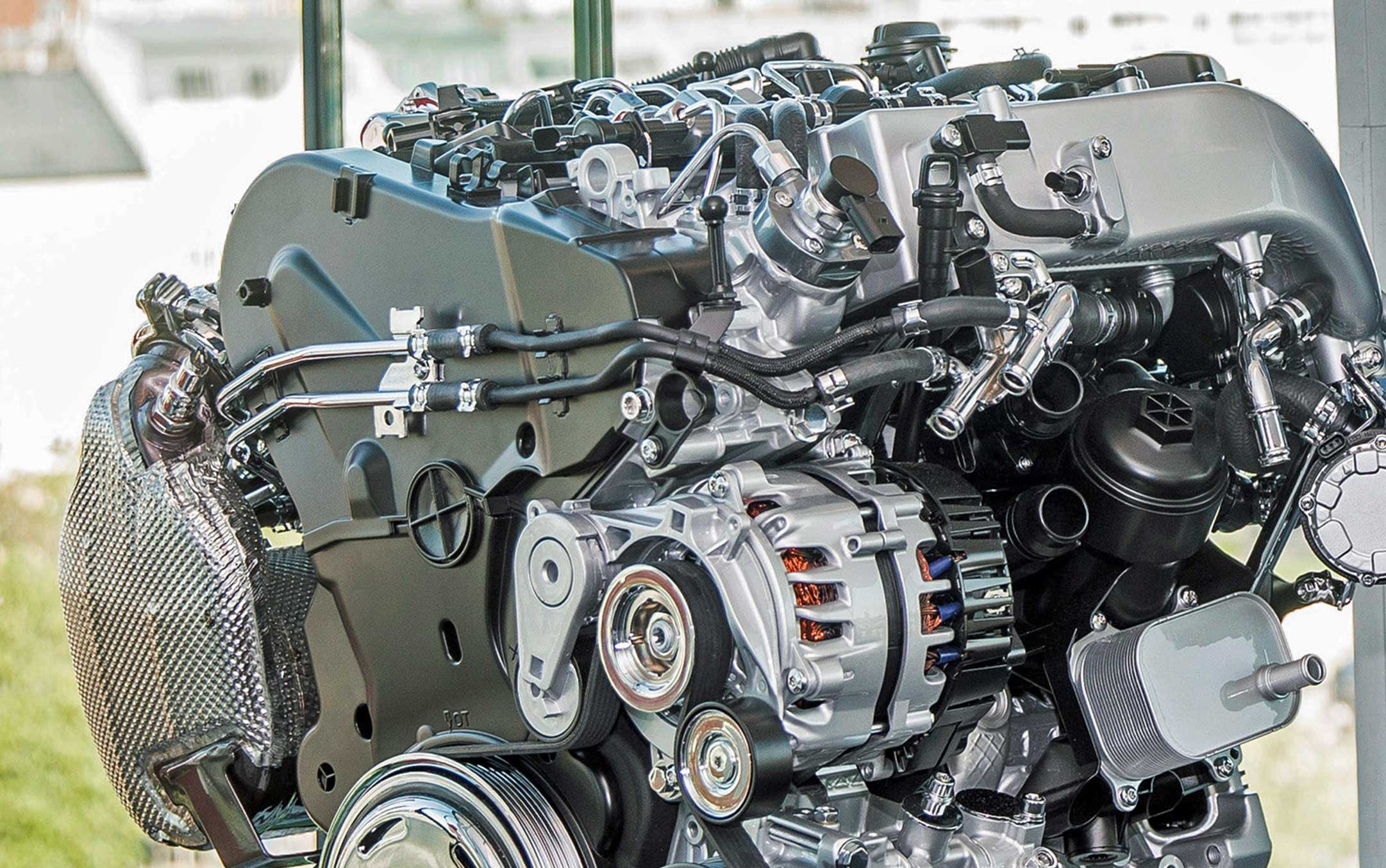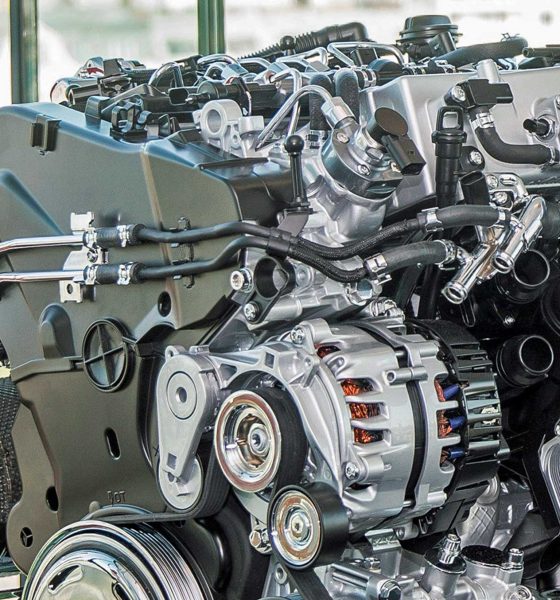

News
Diesel-powered Volkswagen AG cars get banned in South Korea over emissions cheating
The South Korean Ministry of Environment announced on Tuesday that it is banning the domestic sales of eight diesel-powered vehicles from three Volkswagen AG brands for violating emissions regulations. In a statement to local media, the ministry stated that it will slap fines and seek prosecution on the German-based carmakers.
According to a The Korea Herald report, a probe from the ministry has determined that the German automakers had manipulated pollution control devices used in their diesel-powered vehicles. The vehicles involved are comprised of 1,261 cars across eight models that were sold in the country from May 2015 to January 2018 under the Volkswagen, Audi, and Porsche brands.
These vehicles are the Volkswagen Touareg V6 3.0 TDI BMT, Volkswagen Touareg 3.0 TDI 4 Motion, the Audi A6 40 TDI Quattro, two Audi A6 50 TDI Quattro models, two Audi A7 50 TDI Quattro models, and the Porsche Cayenne diesel, a variant of the popular crossover that has been discontinued after the company’s decision to abandon diesel last September.
South Korean officials noted that the vehicles in question were emitting ten times more nitrogen oxide gas than normal. “They were manipulated so that the emission mitigation devices perform at lower levels in driving conditions that are different from those when they were certificated,” an official from South Korean Ministry of Environment said.
As a result of the ban, South Korea is planning on canceling the import certifications of the Volkswagen AG diesel cars. The country is also ordering correction measures and penalties, which are expected to reach about 7.9 billion won ($6.5 million) for Audi, and 4 billion won ($3.3 million) for Porsche. An investigation into the Volkswagen AG brands will also be underway.
South Korea’s announcement comes on the heels of a decision by a district court from Düsseldorf, Germany, which recently determined that Volkswagen’s software fix for vehicles affected by the Dieselgate scandal in 2015 actually contained another cheating device. According to the district court, Volkswagen’s Dieselgate software fix only worked at outside temperatures between 10-32 degrees Celsius. In the event that the weather falls below or above the range, the supposedly fixed vehicles would overly-pollute as usual. As noted in a WallStreet-Online.de report, the repercussions of the district court’s findings will likely result in more fines for the German auto juggernaut.
Ultimately, these developments come at an inopportune time for Volkswagen, especially since the company has recently announced that it has created a diesel engine that was “absolutely clean.” Apart from this, the company’s upcoming all-electric car, the ID.3, has also been receiving much excitement from the EV community. The ID.3 is designed to be a mass-market EV, and so far, the reception to the vehicle has been very encouraging, with 10,000 pre-orders for the all-electric hatchback being recorded within 24 hours of its unveiling.

News
Tesla starts showing how FSD will change lives in Europe
Local officials tested the system on narrow country roads and were impressed by FSD’s smooth, human-like driving, with some calling the service a game-changer for everyday life in areas that are far from urban centers.

Tesla has launched Europe’s first public shuttle service using Full Self-Driving (Supervised) in the rural Eifelkreis Bitburg-Prüm region of Germany, demonstrating how the technology can restore independence and mobility for people who struggle with limited transport options.
Local officials tested the system on narrow country roads and were impressed by FSD’s smooth, human-like driving, with some calling the service a game-changer for everyday life in areas that are far from urban centers.
Officials see real impact on rural residents
Arzfeld Mayor Johannes Kuhl and District Administrator Andreas Kruppert personally tested the Tesla shuttle service. This allowed them to see just how well FSD navigated winding lanes and rural roads confidently. Kruppert said, “Autonomous driving sounds like science fiction to many, but we simply see here that it works totally well in rural regions too.” Kuhl, for his part, also noted that FSD “feels like a very experienced driver.”
The pilot complements the area’s “Citizen Bus” program, which provides on-demand rides for elderly residents who can no longer drive themselves. Tesla Europe shared a video of a demonstration of the service, highlighting how FSD gives people their freedom back, even in places where public transport is not as prevalent.
What the Ministry for Economic Affairs and Transport says
Rhineland-Palatinate’s Minister Daniela Schmitt supported the project, praising the collaboration that made this “first of its kind in Europe” possible. As per the ministry, the rural rollout for the service shows FSD’s potential beyond major cities, and it delivers tangible benefits like grocery runs, doctor visits, and social connections for isolated residents.
“Reliable and flexible mobility is especially vital in rural areas. With the launch of a shuttle service using self-driving vehicles (FSD supervised) by Tesla in the Eifelkreis Bitburg-Prüm, an innovative pilot project is now getting underway that complements local community bus services. It is the first project of its kind in Europe.
“The result is a real gain for rural mobility: greater accessibility, more flexibility and tangible benefits for everyday life. A strong signal for innovation, cooperation and future-oriented mobility beyond urban centers,” the ministry wrote in a LinkedIn post.
News
Tesla China quietly posts Robotaxi-related job listing
Tesla China is currently seeking a Low Voltage Electrical Engineer to work on circuit board design for the company’s autonomous vehicles.

Tesla has posted a new job listing in Shanghai explicitly tied to its Robotaxi program, fueling speculation that the company is preparing to launch its dedicated autonomous ride-hailing service in China.
As noted in the listing, Tesla China is currently seeking a Low Voltage Electrical Engineer to work on circuit board design for the company’s autonomous vehicles.
Robotaxi-specific role
The listing, which was shared on social media platform X by industry watcher @tslaming, suggested that Tesla China is looking to fill the role urgently. The job listing itself specifically mentions that the person hired for the role will be working on the Low Voltage Hardware team, which would design the circuit boards that would serve as the nervous system of the Robotaxi.
Key tasks for the role, as indicated in the job listing, include collaboration with PCB layout, firmware, mechanical, program management, and validation teams, among other responsibilities. The role is based in Shanghai.
China Robotaxi launch
China represents a massive potential market for robotaxis, with its dense urban centers and supportive policies in select cities. Tesla has limited permission to roll out FSD in the country, though despite this, its vehicles have been hailed as among the best in the market when it comes to autonomous features. So far, at least, it appears that China supports Tesla’s FSD and Robotaxi rollout.
This was hinted at in November, when Tesla brought the Cybercab to the 8th China International Import Expo (CIIE) in Shanghai, marking the first time that the autonomous two-seater was brought to the Asia-Pacific region. The vehicle, despite not having a release date in China, received a significant amount of interest among the event’s attendees.
Elon Musk
Elon Musk and Tesla AI Director share insights after empty driver seat Robotaxi rides
The executives’ unoccupied tests hint at the rapid progress of Tesla’s unsupervised Robotaxi efforts.

Tesla CEO Elon Musk and AI Director Ashok Elluswamy celebrated Christmas Eve by sharing personal experiences with Robotaxi vehicles that had no safety monitor or occupant in the driver’s seat. Musk described the system’s “perfect driving” around Austin, while Elluswamy posted video from the back seat, calling it “an amazing experience.”
The executives’ unoccupied tests hint at the rapid progress of Tesla’s unsupervised Robotaxi efforts.
Elon and Ashok’s firsthand Robotaxi insights
Prior to Musk and the Tesla AI Director’s posts, sightings of unmanned Teslas navigating public roads were widely shared on social media. One such vehicle was spotted in Austin, Texas, which Elon Musk acknowleged by stating that “Testing is underway with no occupants in the car.”
Based on his Christmas Eve post, Musk seemed to have tested an unmanned Tesla himself. “A Tesla with no safety monitor in the car and me sitting in the passenger seat took me all around Austin on Sunday with perfect driving,” Musk wrote in his post.
Elluswamy responded with a 2-minute video showing himself in the rear of an unmanned Tesla. The video featured the vehicle’s empty front seats, as well as its smooth handling through real-world traffic. He captioned his video with the words, “It’s an amazing experience!”
Towards Unsupervised operations
During an xAI Hackathon earlier this month, Elon Musk mentioned that Tesla owed be removing Safety Monitors from its Robotaxis in Austin in just three weeks. “Unsupervised is pretty much solved at this point. So there will be Tesla Robotaxis operating in Austin with no one in them. Not even anyone in the passenger seat in about three weeks,” he said. Musk echoed similar estimates at the 2025 Annual Shareholder Meeting and the Q3 2025 earnings call.
Considering the insights that were posted Musk and Elluswamy, it does appear that Tesla is working hard towards operating its Robotaxis with no safety monitors. This is quite impressive considering that the service was launched just earlier this year.








